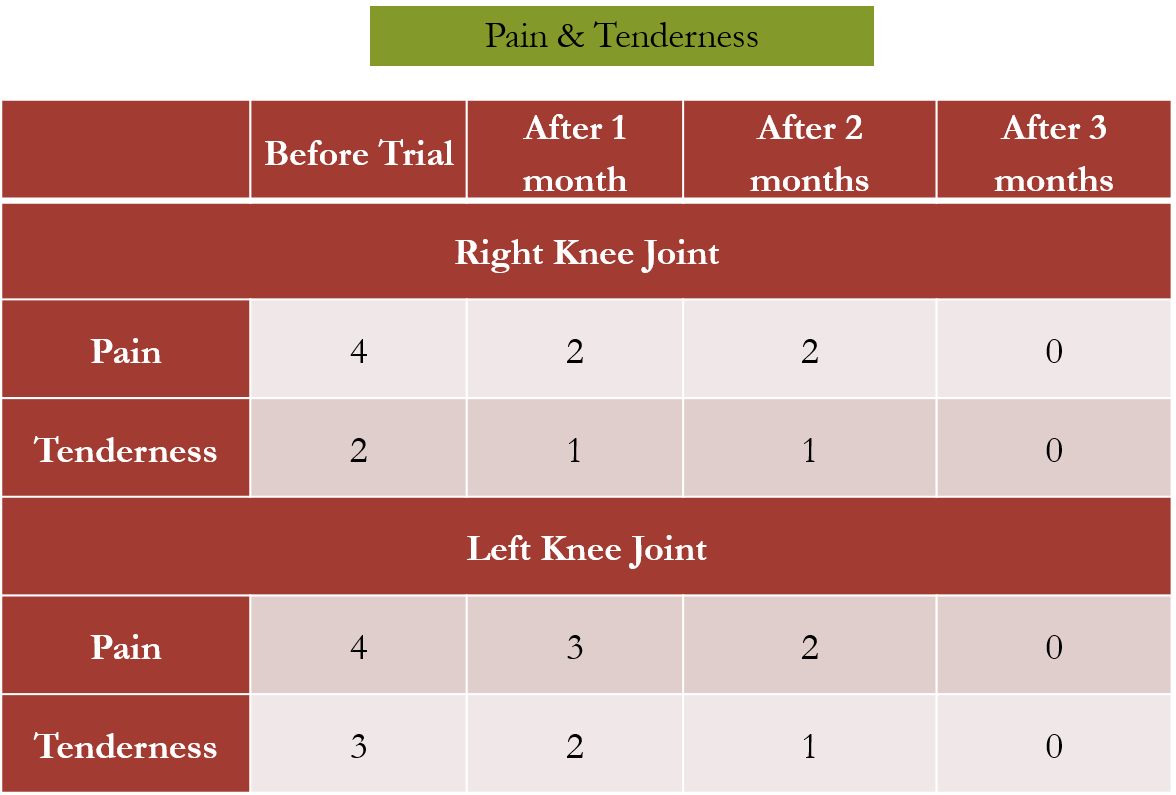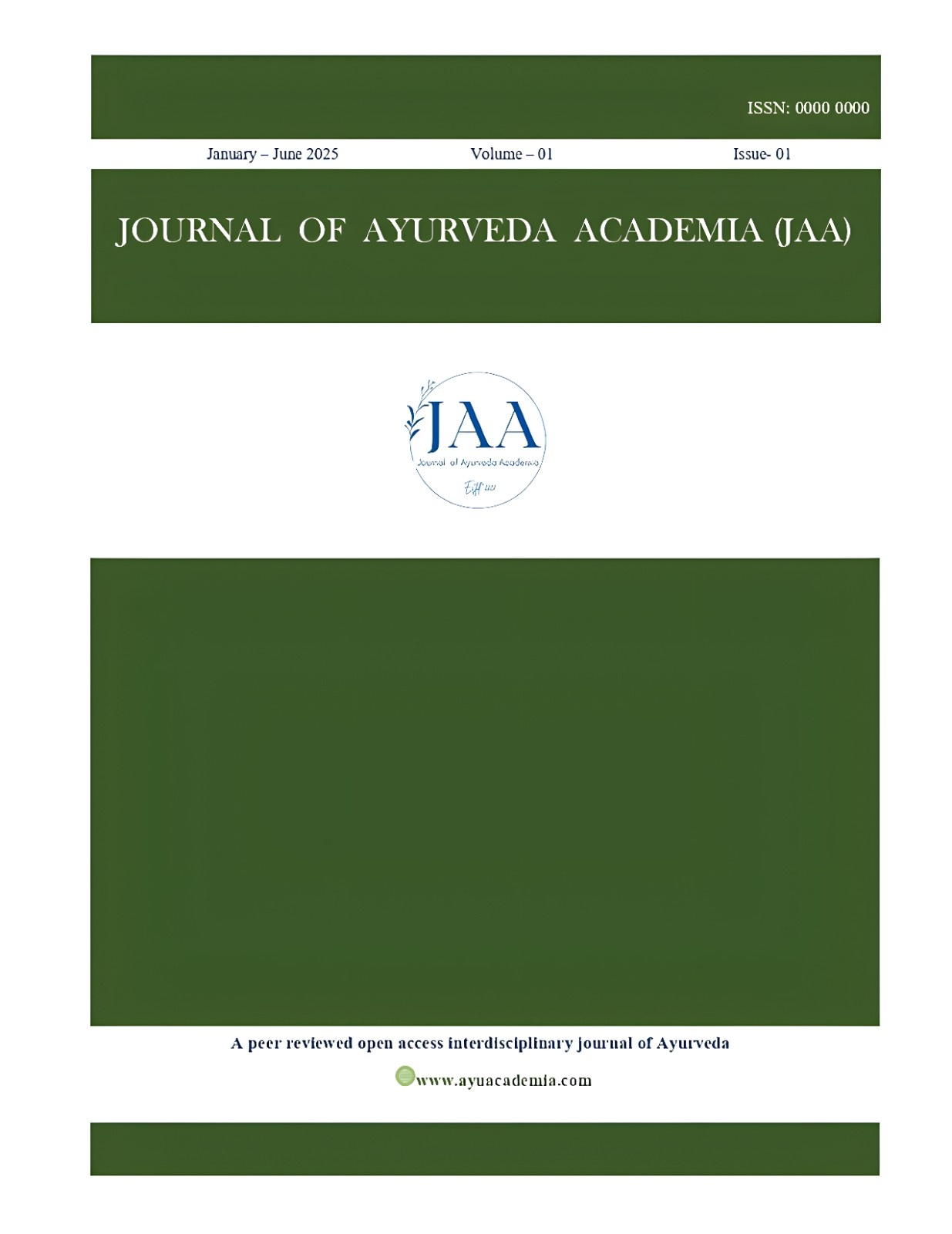Efficacy of Ayurvedic Interventions in Managing Kroshtuksheersha: A Case Study
ORIGIONAL RESEARCH (CASE STUDY)
DOI:
https://doi.org/10.64280/JAA.2025.V1I107Keywords:
Kroshtuksheersha, Ayurvedic management, Vatavyadhi, Knee joint, JanubastiAbstract
ABSTRACT
Background: Movement is essential for daily functioning, and any restriction can cause significant discomfort and affect quality of life. In Ayurveda, disorders that involve impaired movement are primarily associated with Vata dosha and classified under Vatavyadhi. Kroshtuksheersha, as described by Acharya Sushruta, is one such Vatavyadhi, presenting with knee joint swelling, redness, and pain due to the combined predominance of Vata and Rakta doshas. This condition is uncommon in modern clinical practice. Objective: To evaluate the effectiveness of an Ayurvedic therapeutic regimen in the management of Kroshtuksheersha and its role in alleviating associated symptoms. Methods: An 18-year-old male with symptoms of knee swelling, redness, pain, and restricted mobility was diagnosed with Kroshtuksheersha. The treatment plan was designed to balance Vata dosha while preventing aggravation of Pitta and Rakta doshas. The therapeutic protocol involved the use of Aampachak drugs to eliminate Ama, Vatashamak and Raktashodhak medicines to pacify Vata and purify Rakta, followed by Janubasti therapy once inflammatory signs subsided to ensure complete pacification of Vata dosha. Outcomes were assessed using knee circumference, range of motion, pain level, and tenderness grading. Results
& Conclusion: Over a three-month period, the patient demonstrated significant improvement, with noticeable reduction in swelling, redness, pain, and mobility restrictions. These findings suggest that Ayurvedic treatment can be highly effective in managing Kroshtuksheersha through a personalized approach targeting underlying dosha imbalances. Larger clinical studies are warranted to confirm these results and establish standardized treatment protocols.







